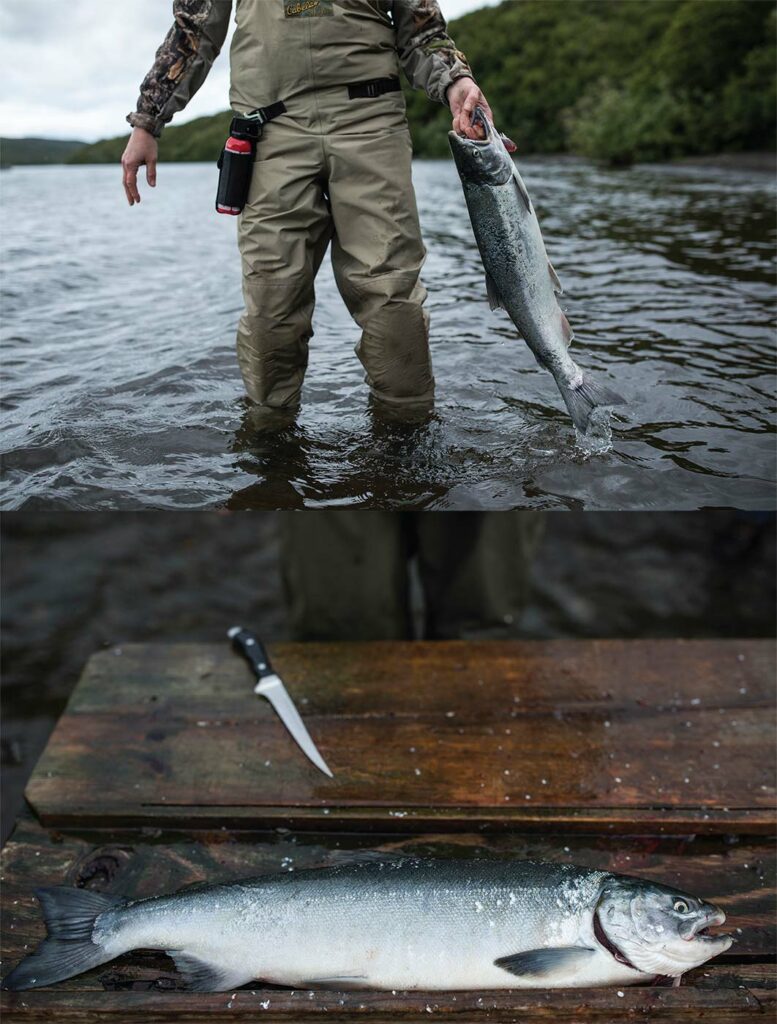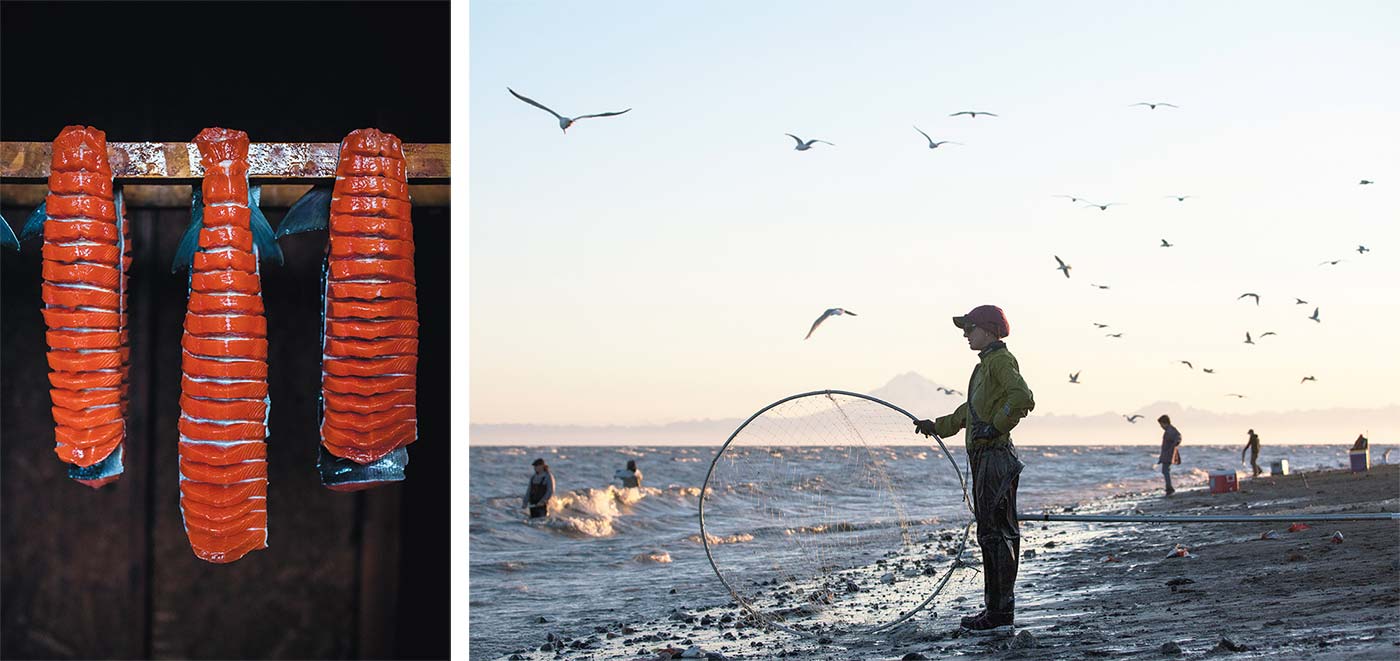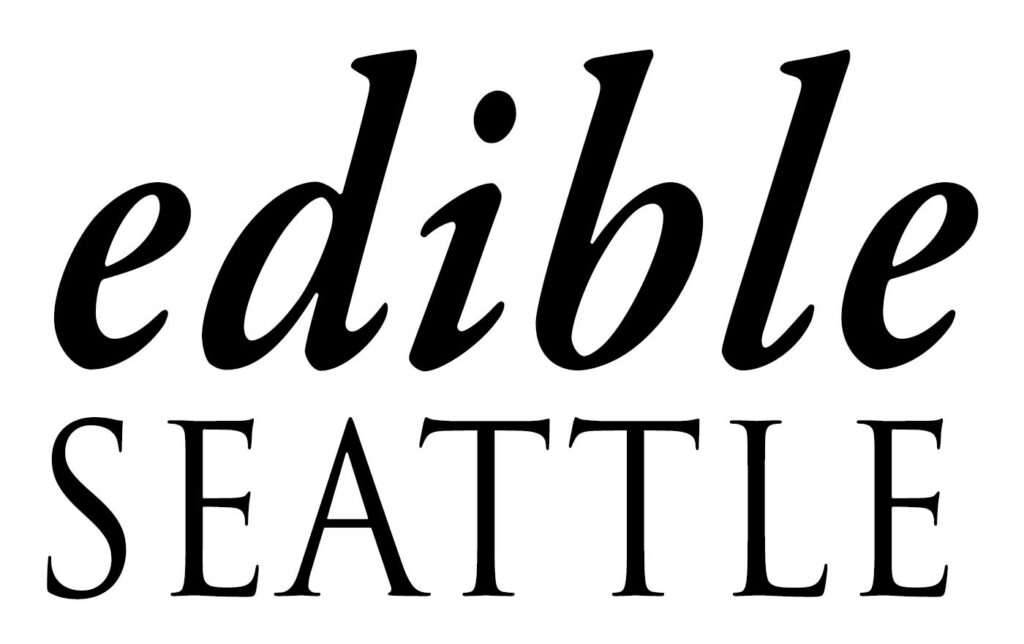
Wild salmon connects consumers to landscapes and small fishing families in Alaska
IMAGES BY NATHANIEL WILDER
When you see “wild salmon” on a menu or sign at your local fish counter, it usually means the fish were caught in Alaska.
Only about a quarter of the salmon Americans eat is wild. Of that portion, at least 80 percent comes from Alaskan waters in any given year, with the rest coming from Canada, the Pacific Northwest and California. The majority of salmon sold in the U.S. is Atlantic salmon, which means they were raised around the globe in fish farming operations that confine the stock in underwater pens where they’re raised on manufactured feed for uniform flavor, color and nutritional value. You can also sometimes find farmed king and coho salmon as well.

